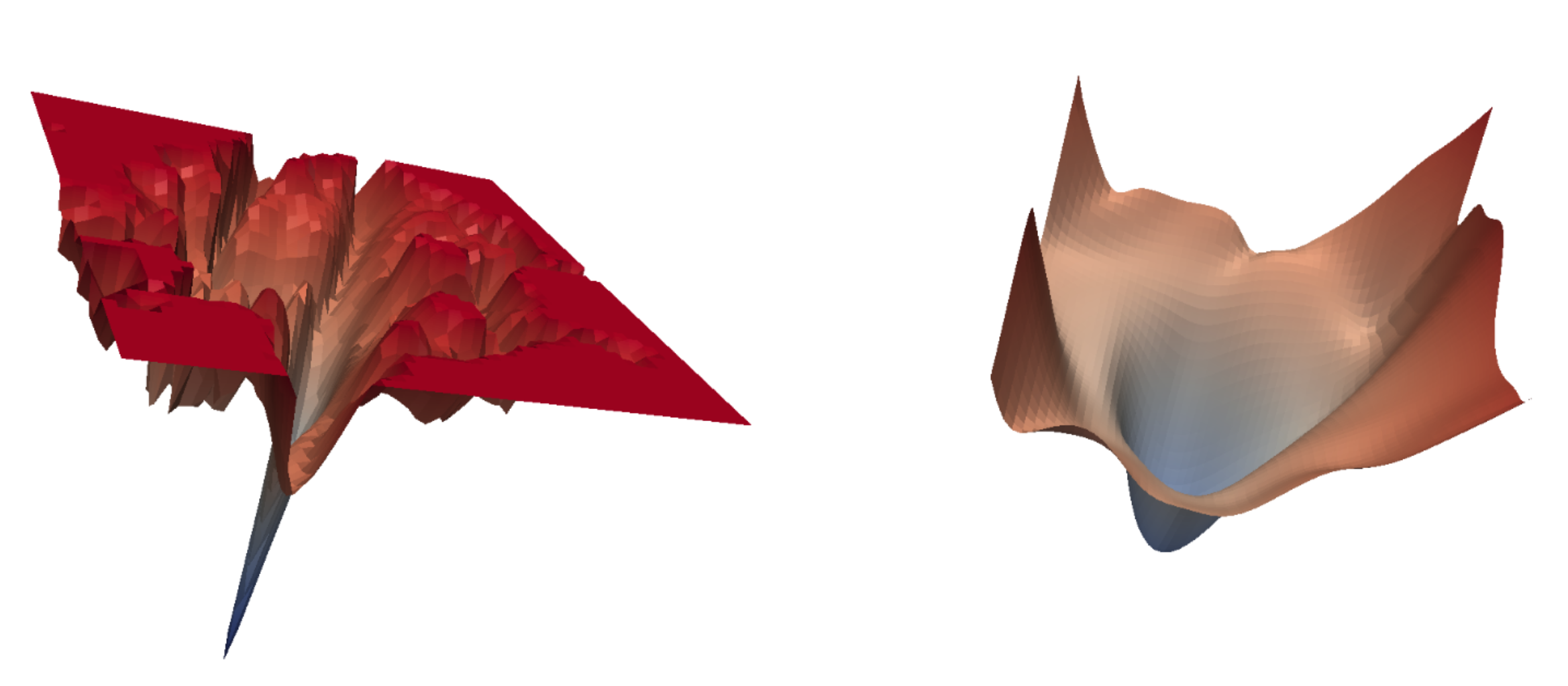~ in Pytorch ~
SAM simultaneously minimizes loss value and loss sharpness. In particular, it seeks parameters that lie in neighborhoods having uniformly low loss. SAM improves model generalization and yields SoTA performance for several datasets. Additionally, it provides robustness to label noise on par with that provided by SoTA procedures that specifically target learning with noisy labels.
This is an unofficial repository for Sharpness-Aware Minimization for Efficiently Improving Generalization. Implementation-wise, SAM class is a light wrapper that computes the regularized "sharpness-aware" gradient, which is used by the underlying optimizer (such as SGD with momentum). This repository also includes a simple WRN for Cifar10; as a proof-of-concept, it beats the performance of SGD with momentum on this dataset.
ResNet loss landscape at the end of training with and without SAM. Sharpness-aware updates lead to a significantly wider minimum, which then leads to better generalization properties.
It should be straightforward to use SAM in your training pipeline. Just keep in mind that the training will run twice as slow, because SAM needs two forward-backward passes to estime the "sharpness-aware" gradient. If you're using gradient clipping, make sure to change only the magnitude of gradients, not their direction.
from sam import SAM
...
model = YourModel()
base_optimizer = torch.optim.SGD # define an optimizer for the "sharpness-aware" update
optimizer = SAM(model.parameters(), base_optimizer, lr=0.1, momentum=0.9)
...
for input, output in data:
# first forward-backward pass
loss = loss_function(output, model(input)) # use this loss for any training statistics
loss.backward()
optimizer.first_step(zero_grad=True)
# second forward-backward pass
loss_function(output, model(input)).backward()
optimizer.second_step(zero_grad=True)
...| Argument | Description |
|---|---|
params (iterable) |
iterable of parameters to optimize or dicts defining parameter groups |
base_optimizer (torch.optim.Optimizer) |
underlying optimizer that does the "sharpness-aware" update |
rho (float, optional) |
size of the neighborhood for computing the max loss (default: 0.05) |
**kwargs |
keyword arguments passed to the __init__ method of base_optimizer |
Performs the first optimization step that finds the weights with the highest loss in the local rho-neighborhood.
| Argument | Description |
|---|---|
zero_grad (bool, optional) |
set to True if you want to automatically zero-out all gradients after this step (default: False) |
Performs the second optimization step that updates the original weights with the gradient from the (locally) highest point in the loss landscape.
| Argument | Description |
|---|---|
zero_grad (bool, optional) |
set to True if you want to automatically zero-out all gradients after this step (default: False) |
I've verified that SAM works on a simple WRN 16-8 model run on CIFAR10; you can replicate the experiment by running train.py. The Wide-ResNet is enhanced only by label smoothing and the most basic image augmentations with cutout, so the errors are higher than those in the SAM paper. Theoretically, you can get even lower errors by running for longer (1800 epochs instead of 200), because SAM shouldn't be as prone to overfitting.
| Optimizer | Test error rate |
|---|---|
| SGD + momentum | 3.35 % |
| SAM + SGD + momentum | 2.98 % |
